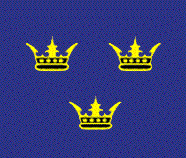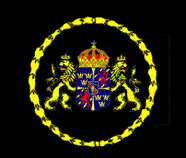Chronologie
der dreißig Jahre Krieges
Dates
and
events of the
Thirty
Years
War
Schwedische Protestierende Kräfte
Kung Gustav Adolph's Livgardet Kompanie
Hortus Bellicus Munchbergk 1632
Die Armee des Emperor
Colonel Walter Butler's Dragoons
Boleslav Orlicki’s Light Artillery
Die
Massen
Commoners of the Thirty Years War
The Wesphalian Baggage Train
Leben
Eines Soldaten
How to
live
like a soldier
during the
Thirty
Years War
Einleitung
zur kunst des Krieges
Weapons and Drill of the
Thirty Years War
Bibliographie
der Betriebsmittel
Annotated Bibliography of Sources
Unsere
Lieblingsaufstellungsorte
Our
favorite
online sites
Die
Galerie
Imagery ofour members

Uniform:Swedish long coat, breeches, and cassock (all made of French grey woolen broadcloth), grey or blue stockings, latchet or top-laced shoes (bucket boots can also be worn), white linen shirt, plain falling band with cuffs, grey felt hat with sugarloaf crown shape. Armor: Buff coat (made of elkskin, not cow hide jerkins) optional. Weapons: .72 cal. Matchlock Musket, Bandoleer of 14 charges, musket rest, Swines Feather (half musket rest/pike), and a Dutch model infantryman's sword.
Standard: The Lifeguard company had two ensigns: one carried the standard of the Swedish state, which was a 6' x 6' blue flag bearing the Tre Krona or three crowns of Sweden. The second ensign carried the colors of the Vasa family, an 8' x 8' black flag made of silk taffeta, painted in the center with a circle of bound wheat sheafs surrounding the crest.


Primary Manuals:
Weapon's handling drill:
Jacob de
Gheyn's Wapenhandelinghe... 1607
Battalion drill: Laurentium a
Troupitzen's
Kreigs Kunst nach Königlicher Schwedischer Manier... 1638.
History of the Company:The first king's lifeguard of Gustavus Adolphus was formed in the year 1615 and wore the livery colors of the young Vasa king. In the year 1626, Gustavus ordered a company size unit to be his lifeguard. The old lifeguard regiment would now be known as the "Yellow Regiment." The new lifeguard was to be composed of the finest musketeers and pikemen of the Landesregiments (the Swedish Conscripted Regiments). All members of this new company were to be trained for ceremonial duty and combat. The king's Lifeguard was to be brigaded with the Yellow Regiment whenever the king rode with the Smaland cavalry regiment. This company was involved in the battle of Wallhof 1626 (the first taste of battle for the new lifeguard), Dirschau 1627, Górzno 1627, Honigfelde 1628, Burgstall 1631, Breitenfield 1631, Rain 1632, Lützen 1632, Oldendorf 1633, Steinau 1633, Nördlingen 1634 (lifeguard was disbanded after the battle of Nordlingen and reformed as Queen Christina's life guard, many of the veterans of the old lifeguard went into service with the French, Dutch, and even English.
History of the Living History Unit
The Swedish Lifeguard was established in 1995 as a group which would be dedicated to the research and portrayal of the Swedish Army during the 30 Years War.
Focus of the Unit
The primary focus of this unit is the exploration of life on the continent of Europe during the 30 Years War (1618-1648,) through The Lifeguard of Gustavus II Adolphus, which represents a portion the Swedish army on campaign from 1626 to 1636. We do explore the relationship of Sweden's role during the Thirty Years War and its impact on the colony of New Sweden in the Delaware Valley (1638 - 1654) under Adolphus' daughter; Christina Vasa.
What the unit expects from it's members
The Livgarde Kompanie requires each member to acquire the appropriate equipment within a reasonable amount of time and a willingness to acquire knowledge of the period in order to be an active member within the unit. We sponsor seminars, drill sessions, and host a variety of events (including the New Sweden Muster in Bridgeton New Jersey, which celebrates the arrival of Swedish colonist to the New World in 1638.)
What does the Lifeguard do?
This group performs 17th C. reenactment for the public with a heavy influence of Swedish military technique. Soldiers are trained to fire within three ranks (a musket volley unique to the Swedes.) Cultural aspects to Swedish camp life are also explored. Camp followers and soldiers demonstrate native Swedish and German dishes which would have been prepared during the Thirty Years War, Period Games, Knitting, drop spinning, bobbin lace making, etc... are all explored through the Swedish Lifeguard.
C/O
Roger Thor Roop
6760
Damascus Rd.
Laytonsville, MD
20882
or
email Roger
Thor Roop